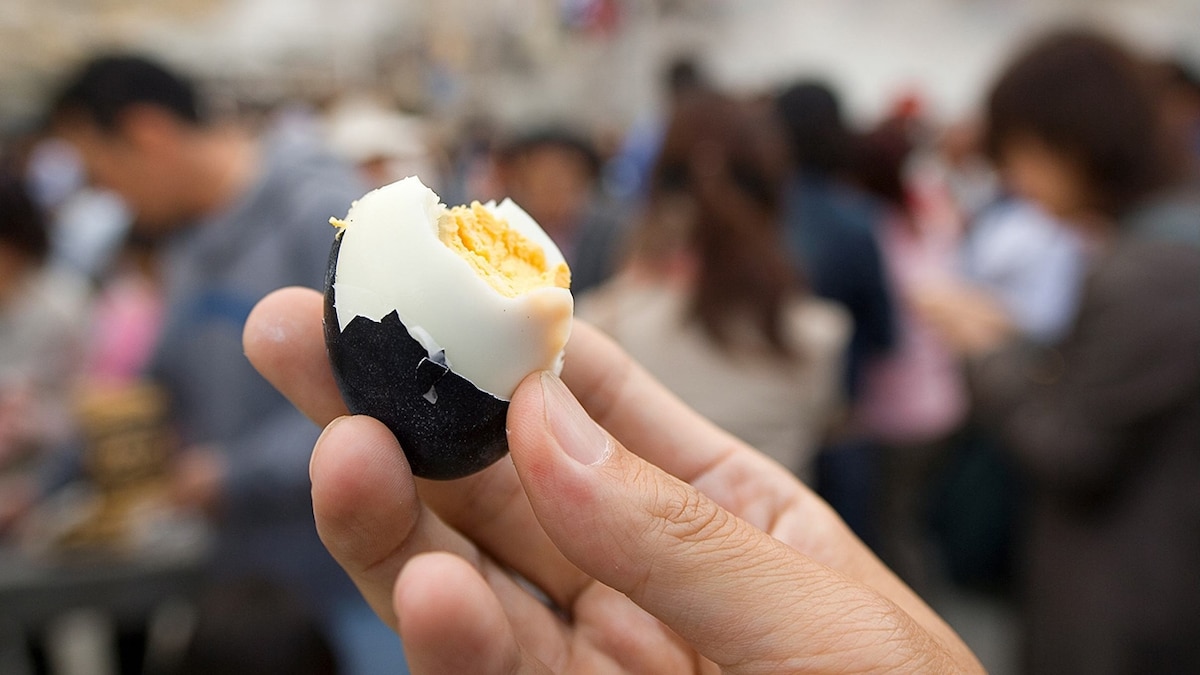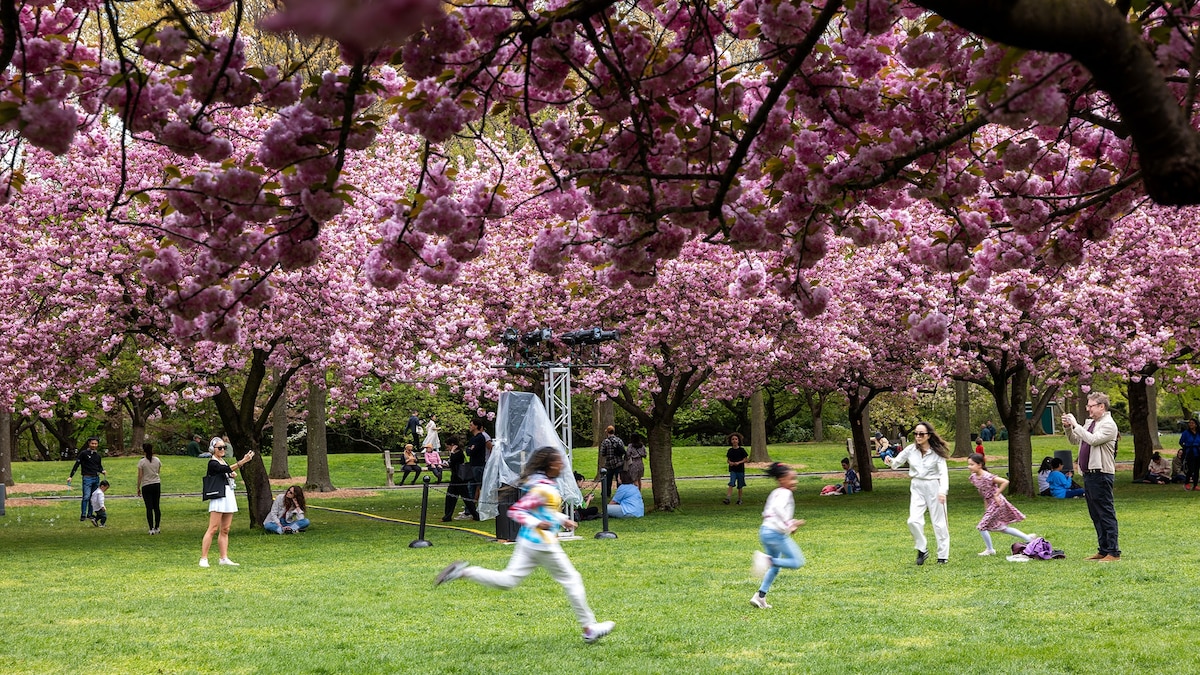Now Reading: Japan’s famed black eggs promise 7 extra years of life
-
01
Japan’s famed black eggs promise 7 extra years of life
Japan’s famed black eggs promise 7 extra years of life

The first thing that hits you isn’t the sight of the steam rising in ghostly tendrils from the mountainside, nor the warning signs advising visitors of the area’s volcanic activity. It’s the scent. A thick, mineral-rich fog clings to the air, an unmistakable reminder that the earth here is very much alive.
Welcome to Owakudani, one of the most otherworldly destinations in Japan. Here the ground exhales plumes of sulfur, the rocky terrain is tinged in shades of ochre and gray, and the region’s most famous culinary delicacy — black eggs, or kuro-tamago — are said to add seven years to your life.
The journey to Owakudani
To embark on the quest for these enigmatic eggs, one must venture to Owakudani, which translates to “Great Boiling Valley.” This geothermal hot spot was forged some 3,000 years ago during Mount Hakone’s last eruption.
Today it’s another kind of hot spot for tourists seeking a whiff of the mineral-rich air and a taste of its famed black eggs. The landscape is a spectacle of nature’s raw energy, with fumaroles hissing, sulfur-stained rocks glowing in eerie shades of yellow, and steaming pools bubbling like a witch’s cauldron.
Sharp-eyed visitors will also notice the network of pipes running alongside the mountain, funneling Owakudani’s prized hot spring water to nearby ryokans (traditional inns), a testament to the region’s long history as an onsen retreat.
Reaching this volcanic wonderland is an adventure in itself. Visitors can take a bus from Hakone-Yumoto or Gora, winding their way up the mountain roads. But the most thrilling approach is by air.
The Hakone Ropeway carries passengers high above the rugged terrain, offering a dramatic ascent through swirling plumes of steam and sweeping views of Hakone’s mountains. As the gondola nears the summit, the lush greenery below gives way to an unforgettable preview of the raw volcanic forces at work.
For chef and food writer Namiko Chen of Just One Cookbook, her first visit to Owakudani with her family was nothing short of surreal.
“As the gondola ascended from Sōunzan Station, we were greeted by the lush mountain scenery of Hakone and the breathtaking sight of Mount Fuji,” she says. “But as we crossed the first peak, the scenery changed dramatically—suddenly, we were hovering over a stark, sulfuric volcanic terrain, which caught us completely off guard.”
If there were ever a dramatic setting for a snack break, this would be it.

Owakudani’s volcanic valley has active sulphur vents and hot springs.
Photograph By Olga Kashubin / Alamy
The culinary alchemy
The process of creating kuro-tamago is a blend of science and a dash of culinary magic. Fresh eggs are placed in wire baskets and submerged into the bubbling hot springs, rich in sulfur and iron. As the eggs cook, a chemical reaction occurs: The iron in the water reacts with the hydrogen sulfide gas, resulting in iron sulfide, which imparts the eggshells with their distinctive black hue.
After about an hour, the eggs are retrieved, moved to a steam pot, and steamed for 15 minutes to finish the process.
Despite its dark exterior, the inside of the black egg is surprisingly tender, smooth and white. The flavor is, well, eggy. And though the aroma is strong, the taste offers only a slight hint of sulfur.
“Most people are shocked by the huge contrast between the appearance and taste,” says Mamoru Sato, director of the Hakone Tourism Association.
The real flavor is in the experience — the act of peeling away the inky shell to reveal the familiar comfort of a hard-boiled egg, all while standing on an active volcanic vent.
“Our kids were initially hesitant to try them,” Chen says. “Our daughter even pinched her nose to avoid the distinct sulfuric aroma! But after cracking the shells and sprinkling a little salt, we all took a bite — hoping to extend our lives by seven years, as the legend goes.”
Outside the souvenir shop, glossy black egg-shaped stools are scattered across the landscape, offering the perfect perch to snack and soak in the scene. On a clear day, Mount Fuji looms against the backdrop of Owakudani’s steaming, sulfur-streaked terrain. Standing there, time itself seems to hesitate, as if granting you the extra years legend has promised.
The seven-year legend
The belief that eating black eggs grants an extra seven years of life has captivated visitors for decades. So where did this tradition begin? The commercial production of boiling black eggs in Owakudani’s hot springs started in 1955 with the Okuhakone Kanko Company, but the roots of the longevity legend stretch much further back.
Owakudani is home to Enmei Jizo, a statue thought to have been carved by the Buddhist monk Kobo Daishi about 1,200 years ago. According to Sato, this Jizo is said to grant longevity and protect children, a belief that evolved into the idea that consuming black eggs could extend one’s lifespan.
And why seven years? The number isn’t random; it’s deeply tied to Japan’s cultural beliefs, since the number seven is considered lucky.
Sato cautioned that there’s no scientific evidence behind the longevity myth, but that hasn’t stopped the story from enticing tourists and locals alike. “Talking about living seven years longer while eating black eggs is an essential part of the Owakudani experience,” he says.
Whether you take the legend to heart or simply enjoy the eggs for their unique origin, the ritual of peeling back an obsidian shell while gazing over the steaming valley has become as much a part of Hakone’s identity as its hot springs themselves. But before you attempt to immortalize yourself through mass egg consumption, be forewarned: The life-extension benefits are said to max out after two eggs.
A word to the wise
While the allure of kuro-tamago is undeniable, it’s essential to approach Owakudani with respect. The area is subject to volcanic activity, and access can be restricted due to elevated gas emissions. Visitors are advised to check current conditions before planning their trip and to heed all safety warnings.
After all, no egg — no matter how life-extending — is worth a rendezvous with danger. And for those with respiratory issues, the sulfuric fumes might be a bit overwhelming, so be prepared to duck inside if necessary.
Here’s where you can taste it
The black eggs are available at Owakudani Kurotamagokan, which sells eggs that have been freshly prepared that day. To get there, take the Hakone Tozan Cable Car from Gora Station to Sōunzan Station (about a 10-minute ride). At Sounzan Station, take the Hakone Ropeway to Owakudani Station, another 10-minute ride. The shop is located on the second floor of the Owakudani Kurotamagokan building and is open daily from 9 a.m. to 4:30 p.m.
Maggie Downs is a travel writer based in California. She is the author of Braver Than You Think: Around the World on the Trip of My (Mother’s) Lifetime, and 50 Things to Do Before You’re Five. Her work has appeared in The Wall Street Journal, The New York Times, AFAR, and McSweeney’s, among others.




















